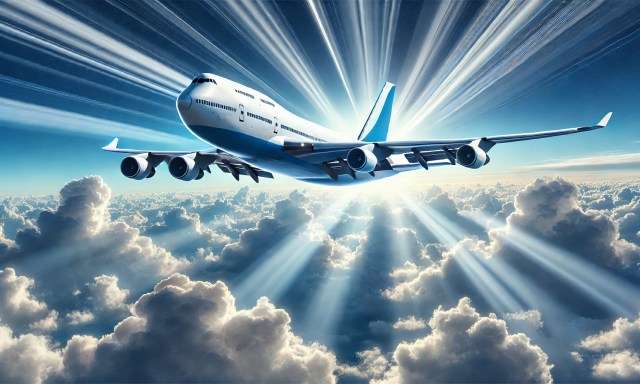The Boeing 747: A Giant in Aviation History
The Boeing 747, often called the “Queen of the Skies,” revolutionized aviation when it was introduced in 1969. This iconic aircraft has not only carried millions of passengers but also played a key role in the global growth of the airline industry. In this article, we’ll explore the history of the Boeing 747, its impact on aviation, and its enduring legacy.
A Brief History of the Boeing 747
The Boeing 747 was first developed in the 1960s as a response to increasing air travel demands. Boeing recognized the need for a larger aircraft that could transport more passengers over longer distances. The 747-100, the first in the series, made its debut flight on February 9, 1969, and began commercial service with Pan Am in 1970.
Its size was unprecedented, boasting a double-deck design that could seat over 350 passengers. This leap in capacity changed air travel, making long-haul flights more accessible and affordable for the masses.
Key Milestones in Boeing 747 History
- 1969: First flight of the Boeing 747-100.
- 1989: Launch of the 747-400, the most successful model with advanced technology.
- 2020: Production of the last 747 model, the 747-8, signaled the end of an era for the iconic aircraft.

The Boeing 747’s Role in Commercial Aviation
The Boeing 747 allowed airlines to serve more passengers per flight, significantly reducing operating costs. This was especially crucial for long-haul international routes. The wide-body design allowed for more comfortable seating arrangements, with airlines offering various classes, such as first class, business, and economy.
How the Boeing 747 Changed Air Travel
The introduction of the Boeing 747 marked the dawn of the jumbo jet era. Before its debut, flying was a luxury that only the wealthy could afford. With the increased capacity of the 747, airlines could offer more seats at lower prices, democratizing air travel.
Its ability to fly long distances without needing to refuel also opened up non-stop transcontinental routes. For example, the 747 made it possible to fly directly from New York to Tokyo, cutting travel time and boosting global connectivity.
The 747’s Impact on Cargo and Military Operations
While the 747 is best known for its passenger service, it has also played a vital role in cargo and military operations. The 747 Freighter (747F) has been a workhorse in the air cargo industry, capable of carrying oversized and heavy freight across continents.
In military applications, the 747 has been adapted for various roles, including as Air Force One, the official aircraft of the President of the United States.
Boeing 747-8 Freighter: The Future of Air Cargo
The Boeing 747-8 Freighter is the largest and most advanced freighter in the world. With a payload capacity of 140 metric tons, it continues to serve major logistics companies and airlines, ensuring that the 747’s legacy in cargo aviation remains strong.
The End of an Era: Phasing Out the 747
After more than five decades of service, Boeing announced in 2020 that it would stop producing the 747. This decision reflected changes in the aviation industry. Airlines are increasingly shifting towards more fuel-efficient, twin-engine planes like the Boeing 787 Dreamliner and the Airbus A350, which offer similar range but at a lower operational cost.
However, the Boeing 747’s retirement from commercial service does not mean it will disappear from the skies entirely. Many 747s remain in service as cargo planes, and others have been converted for special uses, such as firefighting and space exploration.
Conclusion: The 747’s Legacy in Aviation
The Boeing 747 remains one of the most significant aircraft in the history of aviation. Its design and capabilities transformed air travel, making it more accessible to millions worldwide. Though newer aircraft have surpassed it in efficiency, the 747 will always be remembered as a pioneer in the skies.


